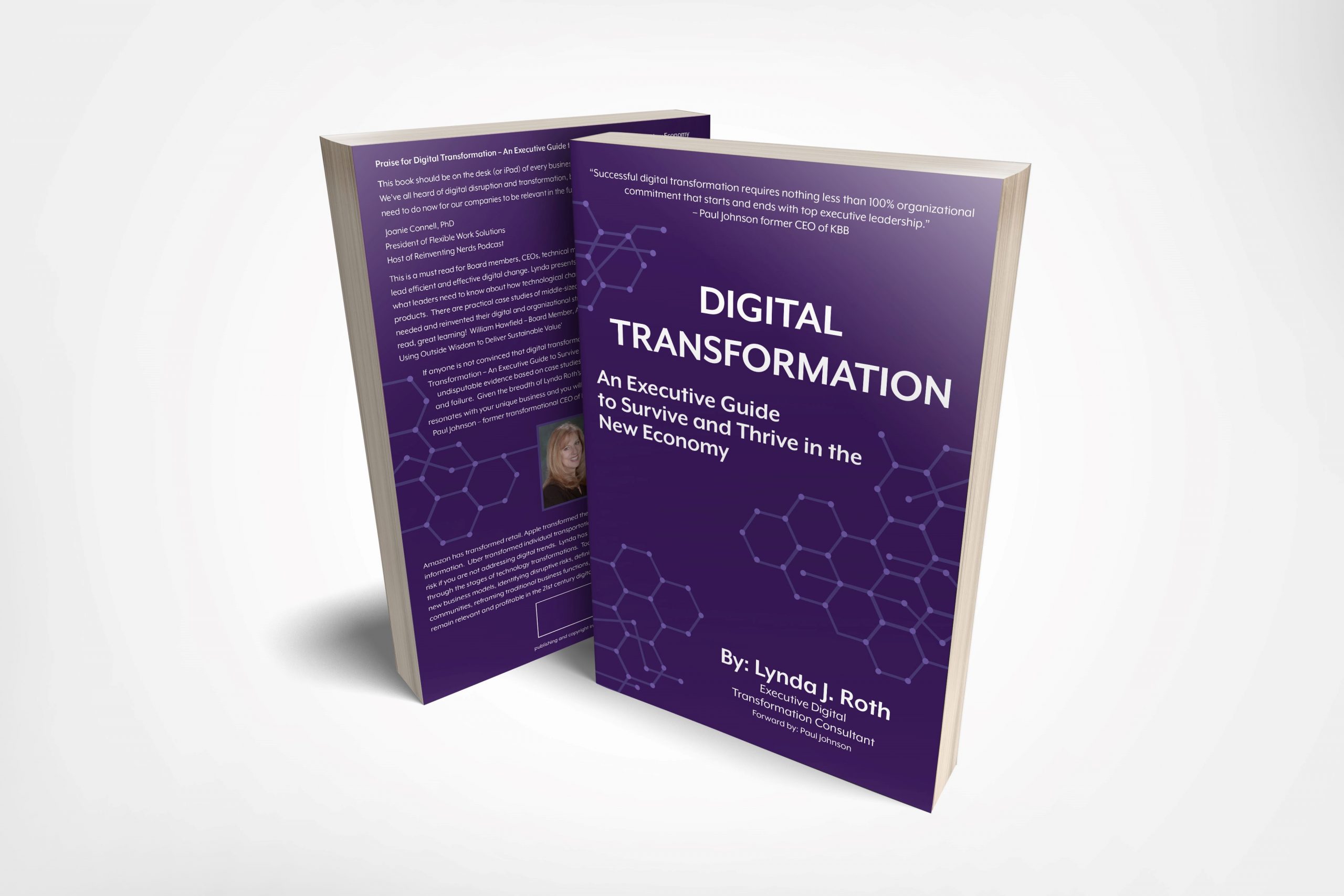![]() Joanie has a conversation with Lynda Roth, a consultant who bridges IT expertise with business and lean management. Lynda founded LJR Consulting Services to provide assessment of existing business and IT processes and educate business executives about information technology options and lean business process to help them creatively reduce cost and improve profits. Lynda also has a book coming out soon called Digital Transformation: An Executive Guide to Survive and Thrive in the New Economy.
Joanie has a conversation with Lynda Roth, a consultant who bridges IT expertise with business and lean management. Lynda founded LJR Consulting Services to provide assessment of existing business and IT processes and educate business executives about information technology options and lean business process to help them creatively reduce cost and improve profits. Lynda also has a book coming out soon called Digital Transformation: An Executive Guide to Survive and Thrive in the New Economy.
Highlights:
Q: You’re not a typical IT consultant. What do you do?
“I generally work with executives. I don’t get into the tech anymore. I’m generally brought in to a board member or executive I’ve met or through someone who referred me. They usually have some sort of a problem and they don’t know how to define it and they don’t know what to do next. That’s where I start. Let’s evaluate what your problem is and then I find out what to do. I organize and manage the whole thing and bring in all the resources.”
Q: You started out as an accountant. How did you get into this line of work?
“My father desperately wanted me to be an accountant when I got out of school. I thought it would take too long. At this time, colleges were just starting to have technology in their curricula. My guidance counselor suggested I look into that. They had a few IT courses and business courses. I got a 2-year degree, got a job, and satisfied my need to move out of my parents’ house. I went back to accounting school at night and got that degree, but I was already making more in IT than I would as an accountant.”
“I started my own software company in the 80s and had my own digital disruption that caused the business to fail. And then I started my own consulting business to help other companies transform.”
Lynda’s story of her own digital disruption is compelling. Listen to the episode to hear it and what she learned.
Lynda also tells stories from her book about transformations that changed whole industries before digital was even a thing. Her lessons are powerful and directly relate to today’s transformative world.
Words of Wisdom:
You need to re-imagine your business today.
In the 21st century, you have to throw out the rule book of what you’ve done before.
Sears was the Amazon of their day.
Why did everybody gravitate toward the automobile? Because it was faster than the horse.
Contact Lynda Roth:
Website: http://www.ljrconsultingservices.com/
Telephone: 818-216-7264
LinkedIn: https://www.linkedin.com/in/lyndajroth/
Look for her book on Amazon.

Podcast: Play in new window | Download